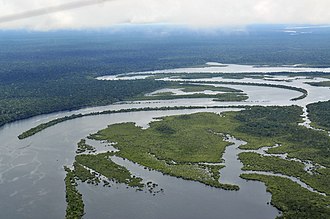
Surprising Resilience of the Amazon Rainforest to Drought: A Complex Finding for the Climate
In a pioneering 22-year study, researchers have disclosed that the Amazon rainforest—Earth’s largest and most diverse tropical forest—can adjust to extended drought conditions. Nonetheless, this adaptability incurs a significant ecological toll: a marked decrease in carbon storage capacity and structural alterations that could affect global climate systems.
Published in Nature Ecology and Evolution, the research was carried out by scientists from the University of Edinburgh and the Federal University of Pará in Brazil. It represents the longest-running drought manipulation study in a tropical rainforest globally, providing unprecedented insights into the long-term reactions of the rainforest to shifting climatic factors.
A Daring Experiment Deep Within the Amazon
Since 2002, researchers have diverted roughly 50% of rainfall from a one-hectare forest area using plastic panels suspended from the canopy in the Caxiuanã National Forest in northern Brazil. The intent was to replicate extended soil drought similar to scenarios anticipated by climate models for much of the Amazon Basin due to global warming.
By examining this altered plot alongside a control plot exposed to regular rainfall, scientists could monitor the forest’s changing structure, tree mortality, water stress, and carbon dynamics over more than two decades.
Stable Adaptation Instead of Ecosystem Collapse
The findings challenge long-standing concerns that climate-induced drought could trigger a catastrophic “tipping point” leading to widespread forest decline and savanna conversion. Instead, researchers discovered a more complex response.
In the first 15 years, tree mortality increased, with the forest losing about 85 megagrams of carbon per hectare—an estimated 34% reduction in its carbon-containing biomass. This loss primarily impacted the largest, tallest trees, crucial for carbon sequestration and ecosystem management.
However, in the subsequent seven years, rather than experiencing further collapse, the forest entered what the researchers describe as an “eco-hydrological stabilization” phase. Total biomass stabilized at 164 mg C/ha—a figure significantly higher than savanna ecosystems (49 mg C/ha) and comparable to tropical dry forests (125 mg C/ha).
Hydraulic Equilibrium: How Trees Adjusted
By 2023, the surviving trees in the drought-exposed plot experienced no greater hydraulic stress than those in the control plot receiving full rainfall. This unexpected finding highlights an important ecological mechanism: as tree density and biomass dwindled, the remaining trees accessed a greater share of available water.
This increase in “biomass-relative water availability” enabled the trees to maintain healthy transpiration rates and hydration levels, despite receiving only half the rainfall. It marked a form of hydraulic equilibrium—an adaptation that permitted the forest to endure under drier circumstances.
Dr. Pablo Sanchez Martinez, the lead author of the study, noted: “Our results indicate that while certain rainforests might withstand extended droughts due to climate change, this stability comes with a significant reduction in the ecosystem’s capacity for carbon storage.”
Implications for Carbon Dynamics
While the forest did not fully collapse, the consequences of drought-induced restructuring were considerable. Several key changes were observed:
– A 34% decline in biomass due to drought stress and mortality
– Disproportionate loss of large, emergent trees vital for long-term carbon storage
– Transition from functioning briefly as a carbon source to stabilizing as a minor carbon sink
– Reduced long-term carbon accumulation during the forest’s stabilized phase
– A shift toward a more open canopy with fewer tall trees and diminished biomass density
These alterations suggest that extensive areas of drought-impacted Amazon forest could emit substantial stored carbon into the atmosphere before achieving a new equilibrium—potentially intensifying global warming.
A Future of Changing Forests
The Amazon Basin collectively sequesters about 123 billion tons of carbon—making it essential for global climate regulation. The recent findings heighten concerns regarding the potential regional and global effects if significant portions of the rainforest encounter similar drought conditions.
The controlled experiment simulated one primary stressor: decreased rainfall reaching the soil. In reality, climate change will introduce overlapping challenges, including:
– Rising temperatures
– Increased atmospheric vapor pressure deficit (VPD)
– More frequent fires
– Land-use changes and fragmentation
– Disruption of rainfall feedback mechanisms within the forest
These additional stressors could worsen mortality, prolong biomass decline, and hinder the forest’s ability to achieve the same type of stabilization seen in the experimental plot.
Optimism Amid Uncertainty
Despite the stark implications, the fact that the Amazon forest demonstrated the capacity to stabilize counters the long-held “point of no return” narrative. Rather than a sudden ecosystem collapse, this study indicates that the rainforest may move to a lower-biomass, altered-but-stable condition.
However, this change is not without its costs. The substantial volume of carbon potentially released during the adaptation process emphasizes the urgency of minimizing global emissions and safeguarding intact forest areas from further deterioration.